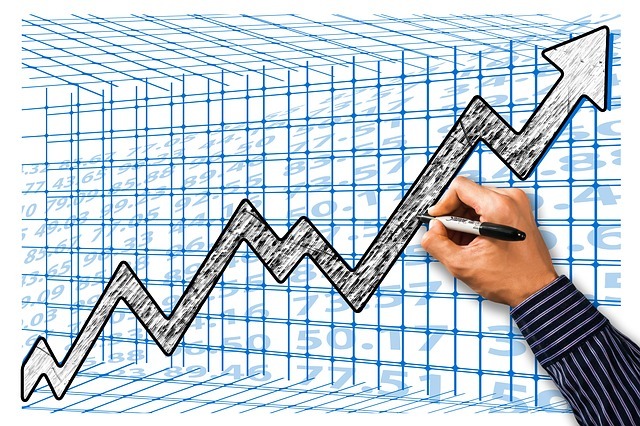Most individuals searching for a company to invest in are not particularly drawn to the phrase “defensive”. Yet, defensive stocks have shown to be crucial. Most individuals searching for a company to invest in are not particularly drawn to the phrase “defensive”, yet defensive stocks have shown to be crucial. Their greatest draw is that, since diversity lowers the correlation of assets held within a portfolio, they tend to protect investors during financial downturns or collapses.
Defensive stocks, however, might appeal to traders with lower risk tolerances (i.e., those seeking less volatility in their investments) who only want to conserve their cash. They are not only helpful during recessions. Defensive stocks are defined in this article, along with their benefits and trading opportunities for investors and traders.
If you’re new to stock trading, you may want to study stock market fundamentals to get an overview of the industry.
DEFENSIVE STOCK: WHAT IS IT?
Defensive stocks, commonly referred to as “non-cyclical stocks” or “safe haven stocks”, are made up of businesses whose revenues and dividend distributions are relatively stable regardless of the status of the broader economy. So, regardless of market circumstances, a defensive investment offers regular dividends and reliable profits. In general, this is because defensive stocks provide products or services that are seen as necessities, which means that demand for them is pretty steady.
Although owning defensive companies does not guarantee poor returns, they have traditionally fared better during economic downturns than cyclical equities, which often follow the near-term momentum of the underlying economy.
WHICH STOCKS ARE THE MOST DEFENSIVE
Examples of defensive stocks may be found in the utilities, healthcare, and consumer staples stock market sectors and often display the traits listed below:
- Strong balance sheets: Businesses with low debt-to-equity ratios are better able to make debt payments in challenging economic times.
- Low beta: A stock’s “beta” gauges how closely it correlates with the overall market. A beta value near 1 indicates that the stock will perform similarly to the overall stock market. In contrast, a low beta value (close to 0) indicates a weaker correlation. Beta levels for defensive stocks are either close to zero or negative.
- P/E Ratio: The price-to-earnings ratio, sometimes known as the P/E ratio, is widely used for valuing stocks. Because defensive stocks often have a low price-to-earnings ratio, the P/E ratio may also aid in identifying them. Because investors do not need to pay a premium to purchase a company with significant potential for profit growth, firms with lower P/E ratios are sometimes a sign of defensive stocks. Instead, the low ratio justifies a lower price-to-earnings ratio since profit growth is constant or almost nil.
EXAMPLE OF DEFENSIVE STOCK
A significant recession or market collapse impacts the economy’s relationship with the stock market. Market collapses like the Global Financial Crisis in 2008/2009 lead to widespread layoffs, the forced liquidation of giant corporations, and government bailouts for industries that, if they fail, constitute a systemic danger.

Investors try to protect themselves from assets that are losing value during economic volatility. Some of the poorest-performing assets often include cyclical equities or companies with a high correlation to the underlying economy. On the other hand, Defensive equities have often outperformed the whole equity market during market collapses because of their attractive non-cyclical characteristics.
Comparing the performance of a defensive company to the performance of its larger equity market over the same period is an efficient technique to demonstrate the propensity of defensive companies to outperform during times of volatility.
You should examine the relative performance of defensive stocks traded in the US about one of the key indexes, such as the Dow Jones Industrial Average, the S&P 500, or the NASDAQ 100. The S&P 500 during the financial crisis of 2008–2009 is seen in the graphic below. It is plain to observe that the US equities market fell precipitously. Due to its constituent parts, the S&P 500 has a significant weighting in cyclical firms, which suffered greatly during this period and caused the index to decline.

Contrarily, the biopharmaceutical business Gilead Sciences could survive the financial crisis and emerge at a level close to where it had entered. Their stock price had a substantial rise, severe decline, and consolidation, leaving it in a far better position than other cyclical firms. Intuitively, this makes sense: customers will seek access to healthcare and prescription medications regardless of the economy. Because they are counter-cyclical, biopharmaceutical and healthcare equities are often conservative investments.

It is important to remember that defensive equities do not always appreciate during recessions. Even though they may increase in value, keep steady, or even decrease, they are still valuable since they often beat the larger stock market during collapses.
ADDITIONAL DEFENSIVE ASSETS
Thankfully, defensive assets are available in the equities market and other markets like the bond, FX, and commodities markets.
- Safe-haven currencies: The US dollar, euro, Japanese yen, and Swiss franc are often considered safe-haven since they are adversely associated with equities during market collapses. Among other desired qualities, these defensive currencies often have current account surpluses, solid financial systems, relatively low government debt to GDP, sustained economic growth, and enough liquidity. It’s important to emphasize that safe haven currency won’t always exhibit all of these traits, but they will undoubtedly gain from them.
- Defensive commodities: Gold is often regarded as a safe-haven commodity since there will always be a demand for the metal (such as for jewelry and specific industrial purposes) and because its supply is innately constrained to the quantity of gold that can be extracted from the earth’s crust. In contrast to currencies, this has the danger of depreciating the currency’s value via inflation since central banks may raise the money supply through monetary policy. Gold has had a specific role in monetary issues throughout the history of the human economy.
- US Government Bonds: To move money from a riskier asset to a more stable one when equities decline, traders and investors often buy US Government Bonds. Due to the US economy’s strength and the US government’s stability, government bonds, typically low-yield investment vehicles guaranteed by the US government, are among the safest bonds in the world.

